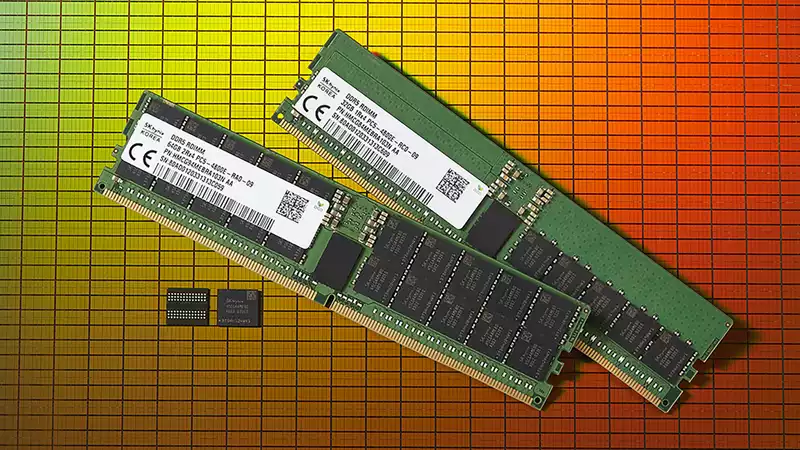After years of development, SK Hynix has introduced the world's first DDR5 DRAM. The first kits initially ran at speeds of 4,800-5,600 Mbps, rivaling the best overclocked DDR4 on the market today.
This first DDR5 kit is approximately 1.8 times faster than DDR4, according to SK Hynix. This is above the standard, unoverclocked DDR4 specification, and many will have noticed that some DDR4 kits, such as Crucial's Ballistix Max 5100, can be as fast. DDR4 has been the gaming PC memory standard and memory manufacturers have been tweaking their schemes ever since.
DDR5 resets the clock; the first kits from SK Hynix will be 4,800MHz to 5,600MHz (RMS), but plans for DDR5-6400 and beyond are underway. [But it's not just speed that DDR5 brings; SK Hynix expects chip stacking using TSV (through-silicon-via) technology to reach capacities of up to 256GB on a single stick. [DDR5 also operates at 0.1V lower voltage than DDR4's 1.1V. [However, these first DDR5 kits are not intended for gaming PCs. These high-capacity modules and lower voltages are for data center applications; both Intel and AMD are rumored to support DDR5 in future server architectures, including Intel's Sapphire Rapids in 2021.
"Intel worked closely with memory leaders, including SK Hynix, in the development of the DDR5 specification, from initial architectural concepts to JEDEC standardization,"
[14] [15] [16] [17] [18] [19] "Intel has worked closely with memory leaders, including SK Hynix, in the development of the DDR5 specification, from initial architectural concepts to JEDEC standardization. Additionally, we collaborated with SK Hynix on silicon development by designing and testing prototypes to ensure DDR5 met its performance targets and was fully ready for our mutual customers."It is not yet known when the change to DDR5 will be implemented in CPU architectures for gaming PCs.
As it stands, DDR4 adequately meets our gaming needs; DDR4-3600 is the sweet spot for existing CPU architectures from AMD and Intel, and there is little to be gained by promoting higher RAM speeds in gaming. This highlights the importance of latency in gaming workloads, at least on current chips, and requires a rethinking of CPU memory architecture to truly take advantage of DDR5.
Samsung is expected to begin volume production of DDR5 in 2021, and Micron is getting DDR5 kits ready.


Comments